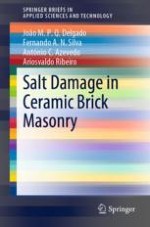This book discusses the effects of soluble mineral salts on ceramic brick masonry walls in Petrolina, a city in Pernambuco, Brazil, located 780 km from the ocean. To shed light on this phenomenon, the authors mapped the pathologies originating from the effects of soluble mineral salts and installed wells to monitor the underground water supply at five locations in the city where the phenomenon most frequently occurs. Further, they analyzed samples of soil, groundwater, and bricks affected by the phenomenon and measured levels of chloride in the atmosphere at these sites. The results obtained indicate that the pathological manifestations are influenced by the high levels of soluble salts observed in the soil and groundwater samples collected, and are not affected by chloride in the atmosphere.
